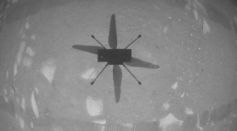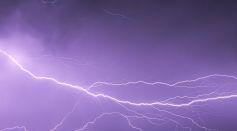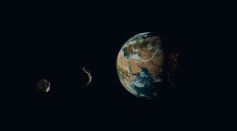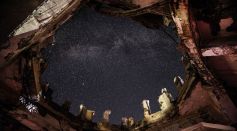SPACE

Squashed Spheroid Planet, Deformed WASP 103-b Found in ESA's Exoplanet Mission Cheops

SpaceX Says Geomagnetic Storm Destroys 40 Starlink Satellites After Elon Musk 'Harmed' Astronomy

Disintegrated SpaceX Falcon 9 Upper Stage Light Up Saturday Night Sky When It Re-Entered The Earth's Atmosphere

NASA Mars Ingenuity Helicopter Successfully Completes 19th Flight After Series of Delays

5 Strangest, Mysterious Objects in the Solar System From Bermuda Triangle of Space to 'Oumuamua and More

How 'Small' is Lockheed's MAV For Mars Mission Rocket? NASA Reveals Specs
Lockheed Martin Bags NASA Contract to Make Rocket, Bring Mars’ First Samples to Earth

Youngest Pair of Near-Earth Asteroids Only 300 Years Old Spotted; When Will It Visit the Planet Again?

Scary NASA Photo Shows How Astronauts Do Intense Training for Dark Moon Missions [LOOK]

February Night Sky: Top Astronomy Events for This Month Include Mercury, Venus, Mars Conjunction, Full Moon And More

Life on Mars Conspiracy Theory Claims Spotting A Figure Posing Like Kate Winslet in ‘Titanic’

Astra Space Aborts First Florida Launch for the 2nd Time Due to Small Telemetry Issue

Consistent Impact Flux Of Asteroids That Scarred Mars for the Past 600 Years Not Random, Crater Detection Algorithm Suggests

US Space Force Wants to Clean Up Space Junk, Can You Help Orbital Prime?
Most Popular

Viruses vs Bacteria: Key Differences, How They Spread, and How We Treat Them

Science-Backed Longevity Supplements: The Best Anti-Aging Vitamins for Powerful Healthy Aging Support

Carbon Footprint 101: What It Is and Simple Ways to Reduce Yours

How Ice Cores Reveal Climate History: Insights from Paleoclimate Science and Ancient Data





